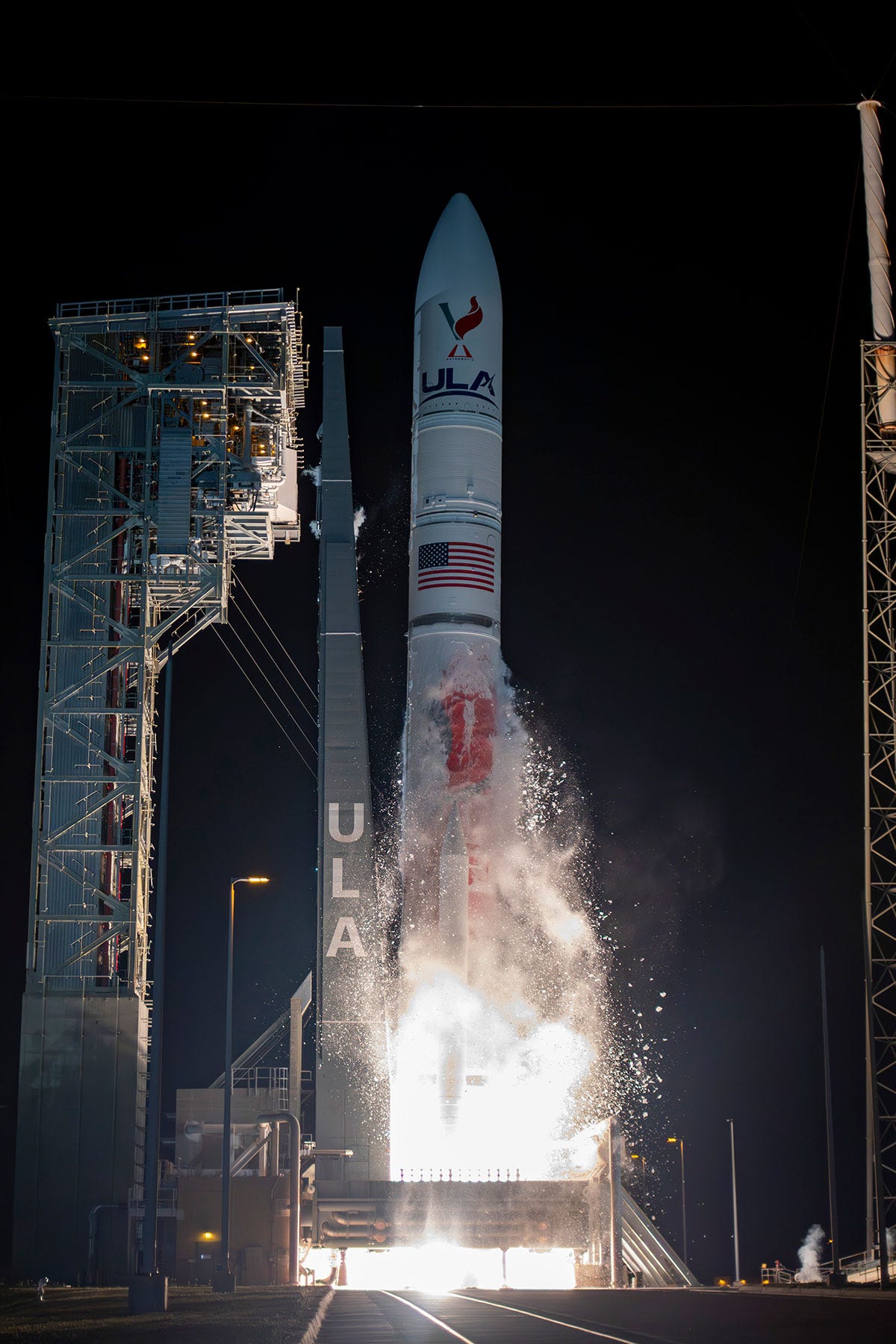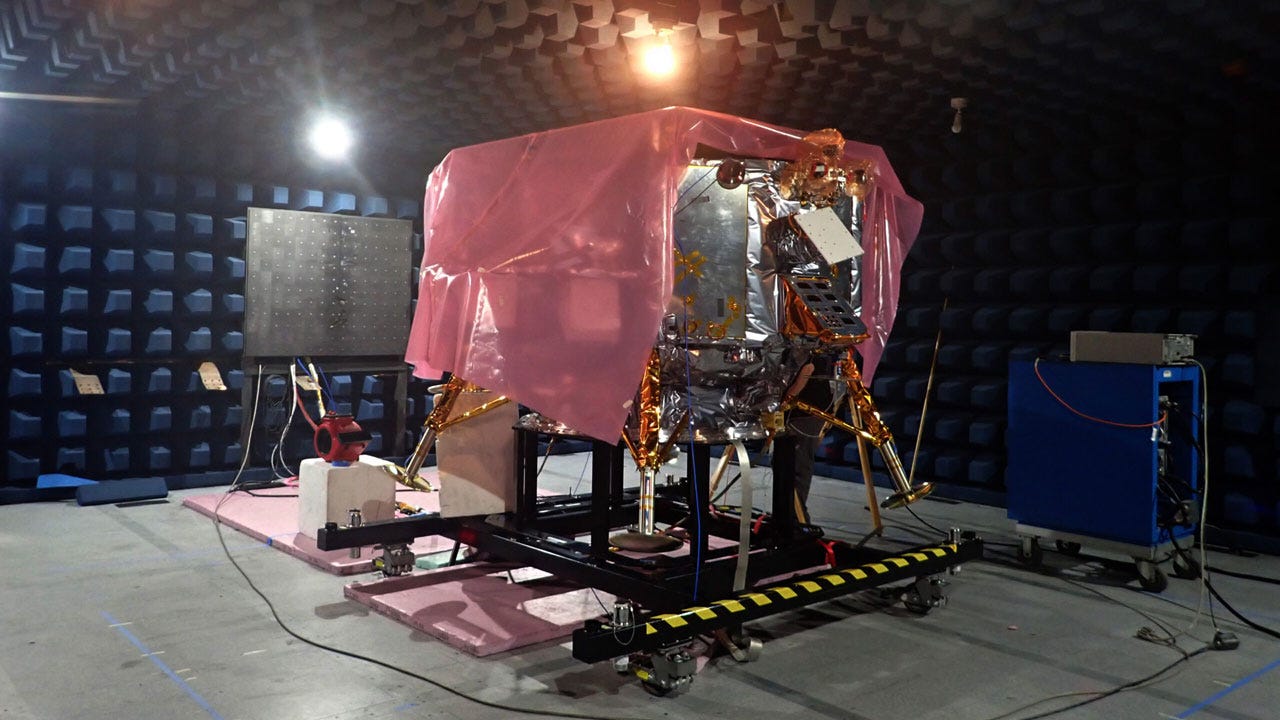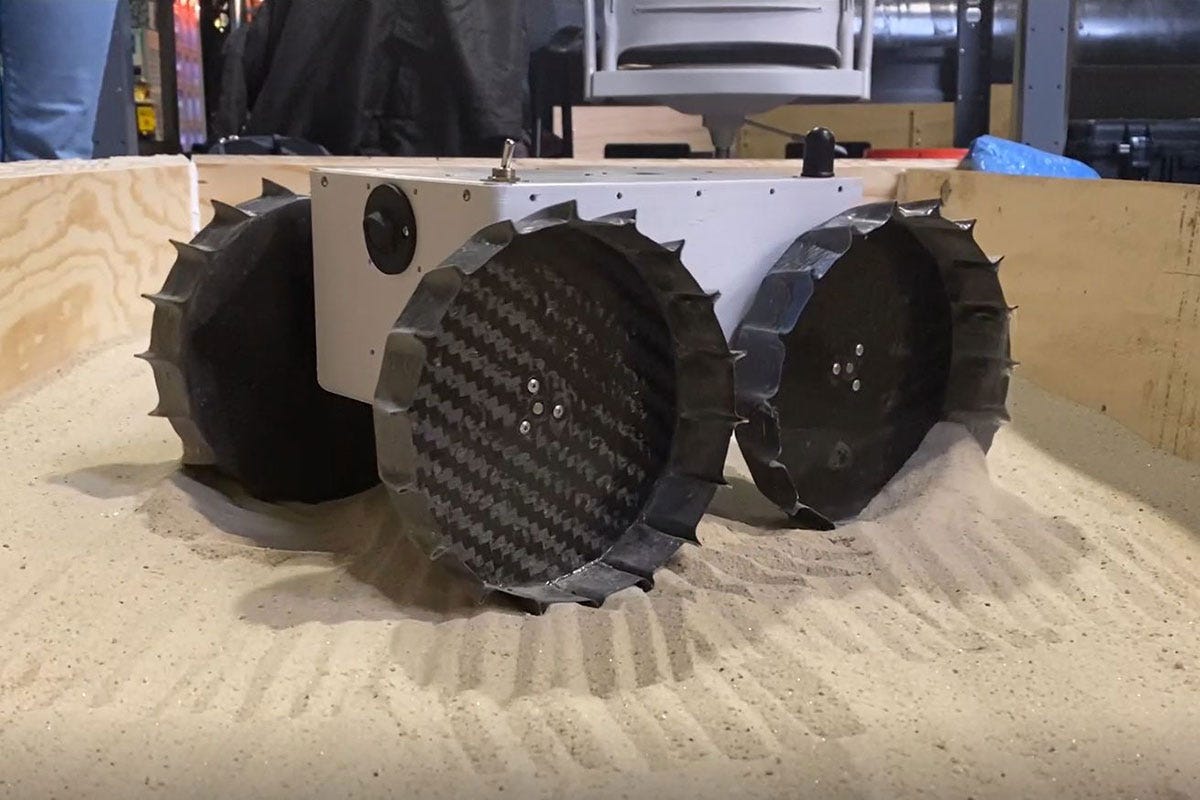Astrobotic Technology’s Peregrine 1 spacecraft is on its way to a landing on the moon next month following the maiden launch of United Launch Alliance’s Vulcan Centaur early Monday morning from Cape Canaveral Space Force Station in Florida.
The two-stage rocket lifted off at 2:18 a.m. EST powered by a pair of BE-4 engines supplied by Blue Origin. Peregrine 1 separated from the Centaur upper stage 50 minutes after liftoff. Astrobotic reported that it was in contact with the spacecraft after separation.
Peregrine 1 is expected to land on Feb. 23 at Gruithuisen Domes on the western edge of the Moon’s Mare Imbrium region. It will operate during the two-week lunar day. The lander is not designed to survive the 140-day lunar night when temperatures can plunge to as low as -130° C (-208° F).
Peregrine 1 is the first mission in NASA’s Commercial Lunar Payload Services (CLPS) program under which the agency is paying companies to carry payloads to the lunar surface.
NASA has paid $79.5 million to Astrobotic to carry five payloads to the surface. The 20 additional payloads on Peregrine 1 are being supplied by space agencies, private companies, and universities from the United States, Japan, Mexico, Europe and Africa. The total payload mass is 90 kg (198 lb).
Astrobotic was responsible for building and testing the lander as well as finding customers to provide payloads and funding to cover the full cost of the mission. The company also paid for the cost of the Vulcan Centaur launch.
If successful, Peregrine 1 could become the first private mission to land on the moon. However, another CLPS-funded mission, Intuitive Machines’ Nova-C lander, is scheduled for launch in mid-February. The spacecraft is taking a faster route to the surface and could land a day or more prior to Peregrine 1.
A Successful Maiden Launch
“Yeehaw! I am so thrilled I can’t tell you how much,” ULA CEO Tory Bruno on the launch webcast after the spacecraft separated. “I am so proud of this team, oh my gosh, this has been years of hard work, so far this has been an absolutely beautiful mission.”
This was the first of two certification launches required before Vulcan Centaur can begin launching spacecraft for the Pentagon. ULA is expected to launch about 54 percent of 48 defense missions under the National Security Space Launch Phase 2 contracts awarded by Space Systems Command in 2020. SpaceX will launch the remaining missions.
Vulcan Centaur’s maiden launch was years behind schedule, in large part due to delays by Blue Origin in developing the BE-4 first-stage engines. ULA also experienced a failure of a Centaur on a test stand, requiring reinforcement of a section of the upper stage prior to launch.
Blue Origin’s two BE-4 first-stage engines, which are powered by liquid methane and liquid oxygen (LOX), appeared to perform as designed on their first launch. The engine will also power Blue Origin’s New Glenn rocket, which is schedule to make its maiden flight in August.
Vulcan Centaur became the first American rocket to reach orbit using liquid methane, and first rocket using methane to succeed on its first flight.
A Chinese company, LandSpace, successfully launched the methane/LOX powered Zhuque-2 rocket on July 12, 2023. The booster failed on its maiden flight on Dec. 14, 2022.
SpaceX’s Starship/Super Heavy launch vehicle is also powered by methane and LOX. The rocket failed in two test launches last year.
Payloads: Rovers, Robots and More
Peregrine 1 will deploy the Iris lunar rover built by students at Carnegie Mellon University. The 2 kg rover has a shoe-box sized body and bottle cap wheels made of carbon fiber. Iris will collect images and ranging data while on the surface.
Peregrine 1 will also catapult five Colmena robots onto the surface for the Mexican Space Agency. The robots weigh a mere 60 g (2.1 oz) and measure 12 cm (4.7 in) in diameter. They will be the first scientific instruments from Latin America on the Moon.
The scientific payloads on the mission include:
Linear Energy Transfer Spectrometer (NASA) will measure the lunar radiation environment.
Neutron Spectrometer System (NASA) will search for indications of water-ice near the lunar surface by measuring hydrogen-bearing materials at the landing site. The system will determine the overall bulk composition of the regolith there.
Navigation Doppler Lidar (NASA) will determine Peregrine 1’s exact velocity and position to land on the Moon using LiDAR (light detection and ranging) technology.
Near-Infrared Volatile Spectrometer System (NASA) will measure surface and subsurface hydration, carbon dioxide, and methane at the landing site. It will also map surface temperatures.
Peregrine Ion-Trap Mass Spectrometer (NASA/ESA/Open University) will characterize the lunar exosphere after descent and landing and throughout the lunar day. NASA developed the spectrometer in partnership with the European Space Agency (ESA) and the Open University of the United Kingdom.
Laser Retroreflector Array (NASA) will use reflected laser light from Earth to precisely determine the location of the Peregrine 1 lander. There are eight 1.25-cm retroreflectors on the lander.
Terrain Relative Navigation (Astrobotic Technology) will enable spacecraft to perform landings on planetary surfaces with an unparalleled accuracy of less than 100 meters. Astrobotic developed the technology under a $10 million Tipping Point contract with NASA in cooperation with Johnson Space Center, Jet Propulsion Laboratory, and Moog.
M-42 Radiation Detector (German Aerospace Center) will measure key radiation data on the flight to the Moon and on the lunar surface.






